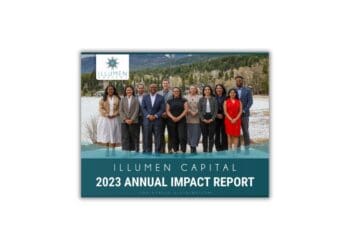Is your organization stuck debating whether to rebrand DEI or eliminate it altogether? That’s probably because you didn’t tie it closely enough to your business strategy in the first place. Darius Johnson of FTI Consulting shares insights about how companies can adapt their approaches while preserving six decades of progress.
Going back to the Equal Pay Act of 1963 and the Civil Rights Act of 1964, regulatory and stakeholder changes have inspired business activities and practices that are now labeled as diversity, equity and inclusion (DEI). These practices have been continuously evolving over the past 60 years, as access to education improves, the talent pool expands, customer demands change and investors better understand the link between workplace engagement and performance.
Our most recent chapter of rapid DEI evolution started in 2020 with the murder of George Floyd at the height of the Covid-19 pandemic. With a stakeholder universe that seemed aligned on the need for social change, organizations adapted their approaches to DEI accordingly to avoid decreased access to capital, talent flight and diminished customer loyalty. The landscape shifted again with the 2023 Supreme Court ruling on race-based affirmative action in higher education, and it will likely shift again with the re-election of Donald Trump.
Unprecedented levels of political polarization and increasing activist attacks on companies and their policies make it clear that the stakeholder universe was never actually as aligned as we once believed.
Skeptics may say these pendulum shifts prove DEI programs don’t work. In reality, the misstep occurs when organizations chase trends instead of business outcomes. As organizations adjust to the new environment, it’s tempting to immediately focus on the surface issues. Should we rebrand DEI? Should we remove the E? Should we sponsor external events? Should we work with third parties to identify underrepresented talent? Should we reshape our DEI team? What will we do if our DEI initiatives are criticized publicly? All are potentially valid questions, but these are tactical considerations that will be easier to address with confidence once some of these strategic considerations have been considered:
- How can DEI support our core business and functional strategies?
- What stakeholder needs can be addressed by DEI?
- What alignment exists between our corporate values and DEI?
- How should internal and external considerations shape our approach to DEI?
- What risks and issues might materialize from DEI efforts?
These strategic questions should be explored collaboratively across the business. The narrative that forms as a result is important for securing buy-in and responding to pressures from DEI skeptics and advocates. As organizations contemplate the best strategic direction and corresponding tactics for DEI programs, they can draw on best practices learned over the decades.
Seek alignment on the mission, not the politics. DEI programs succeed when anchored in business principles that drive collaboration and performance. By avoiding political buzzwords and messaging, a space is created where diverse stakeholders (including the majority demographic) can align on shared goals, fostering high-performing teams and driving organizational success.
Example: An organization may talk about an initiative to recruit more women into engineering roles by stating that, “As part of our commitment to dismantling systemic inequalities, our Women in Engineering program is a key initiative to combat gender imbalances in the industry.” A better framing for maximizing stakeholder alignment might say, “As we continue to expand our operations, our Women in Engineering program is one of the ways we are accelerating our headcount growth and attracting incredible new talent to join our world-class teams.”
Link DEI with the business. Design DEI programs to connect with and enable other business initiatives. To secure their place, DEI efforts must deliver tangible results within the business, creating value and driving measurable outcomes, not just influencing broader societal change.
A supplier diversity initiative should link to business goals in the procurement strategy. A diverse recruitment initiative should link to business goals in the HR strategy. An inclusive advertising campaign should link to business goals in the marketing strategy. These linkages are possible when DEI practitioners collaborate proactively with functional leaders in the business to set priorities and agree on success measures that are most relevant to the business.
Act and communicate authentically. Trust is built when actions and lived experiences align with communications. In today’s environment, where employees, partners and customers are more vocal and discerning, it’s critical that stakeholder engagement reflects both authentic intent and a proven track record. Misalignment can invite scrutiny and hinder value creation.
Debate to innovate. Putting your DEI program on a pedestal and presuming that any questioning is being done in bad faith is likely to leave risks undetected and opportunities untapped. Maximize value creation and prepare for future challenges by pressure testing DEI strategies, plans and messaging — as is best practice for any strategic initiative.
Consider the development process for other enabling strategies: cost management, customer acquisition, revenue growth, business development. While some fundamentals will hold true for most companies, businesses must try unique things to achieve their goals based on their specific circumstances. Effective DEI strategies will be no different.
Moving into the next phase of DEI evolution does not require erasing the progress of the past 60 years. Companies do, however, need to adapt their approaches and messaging to accommodate current internal and external dynamics. Wherever your organization lands, taking the time to reach an aligned understanding of the stakeholder landscape and the multi-dimensional value proposition of DEI will provide a firm foundation to steer activities going forward.




 Darius Johnson is managing director of people and transformation at FTI Consulting. With more than 20 years of experience, he has worked in many industries, including telecommunications, media, energy, manufacturing, life sciences and public sector. He has led change in the context of culture transformations, acquisitions, carve-outs, integrations, process improvement, technology roll-outs and strategy refreshes. He started his career at Chevron delivering global IT projects and eventually managing executive communications for the CIO.
Darius Johnson is managing director of people and transformation at FTI Consulting. With more than 20 years of experience, he has worked in many industries, including telecommunications, media, energy, manufacturing, life sciences and public sector. He has led change in the context of culture transformations, acquisitions, carve-outs, integrations, process improvement, technology roll-outs and strategy refreshes. He started his career at Chevron delivering global IT projects and eventually managing executive communications for the CIO.










